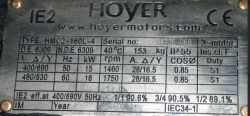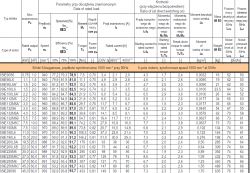>>17296797

On the nameplate the voltages are given for a 15kW 400 Delta /690 Star motor. Due to the power of the motor star/delta starting is advantageous. In my plant my largest motor is 45kW and has just such a start. I have my own 160kVA transformer. Medium voltage line 20kV after the transformer 3x400V. Gentlemen are professionals and you have it in your little finger. Where does the voltage of 690V on the nameplate of the motor for star operation come from? After all, the phase voltage is 230V in my house and the phase-to-phase voltage is 400V.
I realize that there is an answer in your posts but as a layman I cannot find it although I understand the patterns. If I had a 1.5 kW motor with the nameplate designation 400/690 Triangle/Star I could connect it in a three-phase domestic installation with the start described above.



